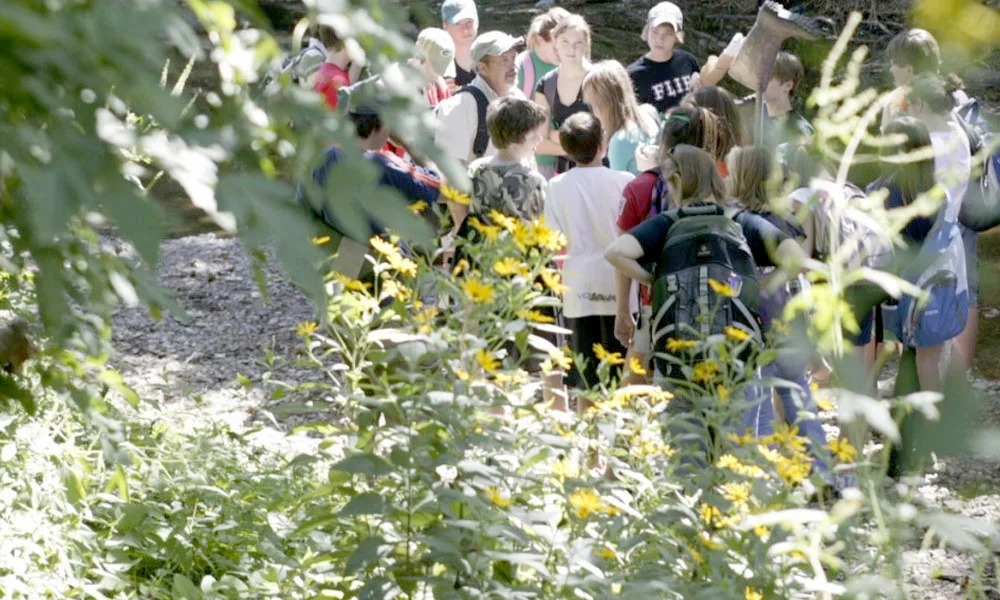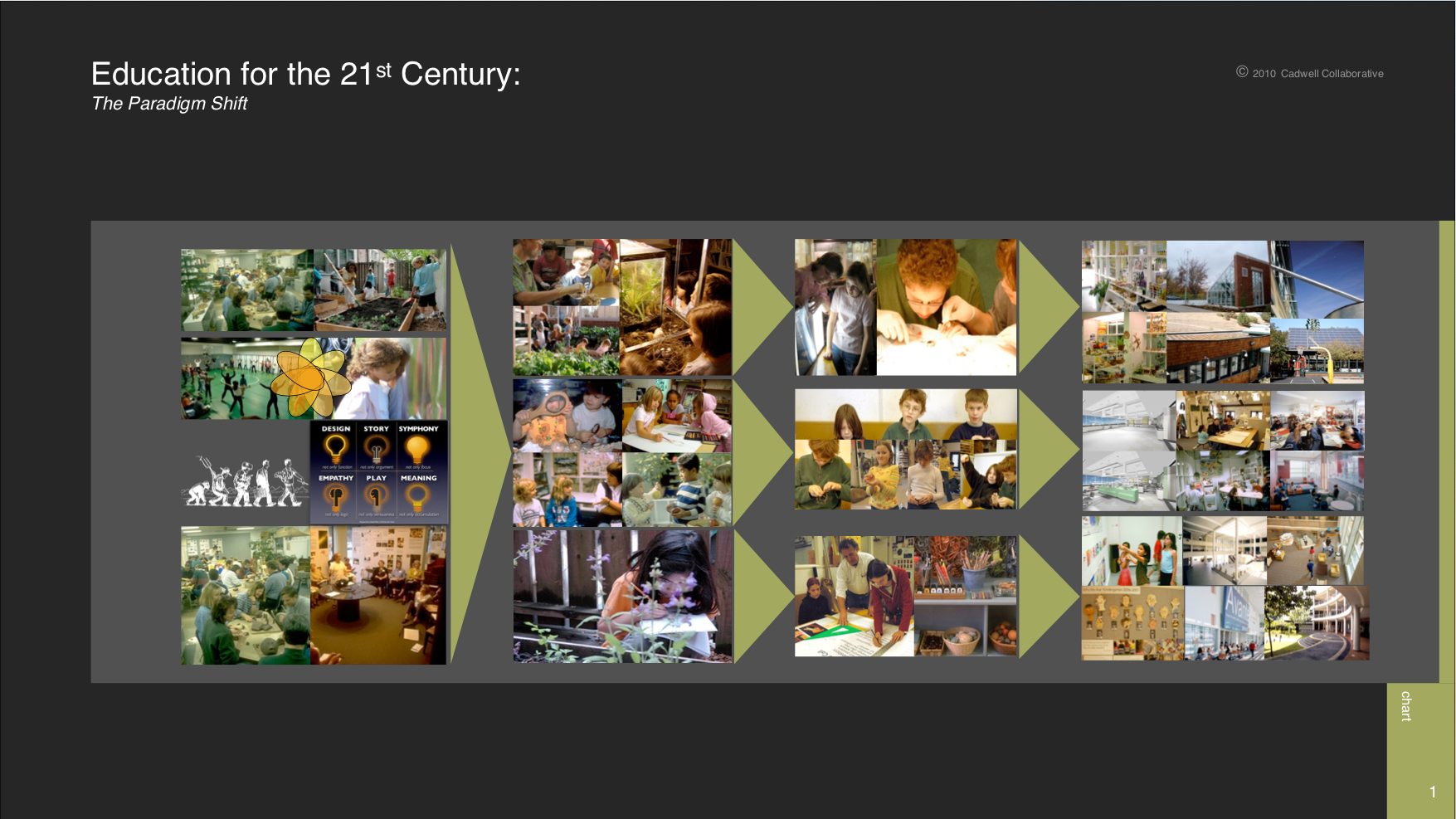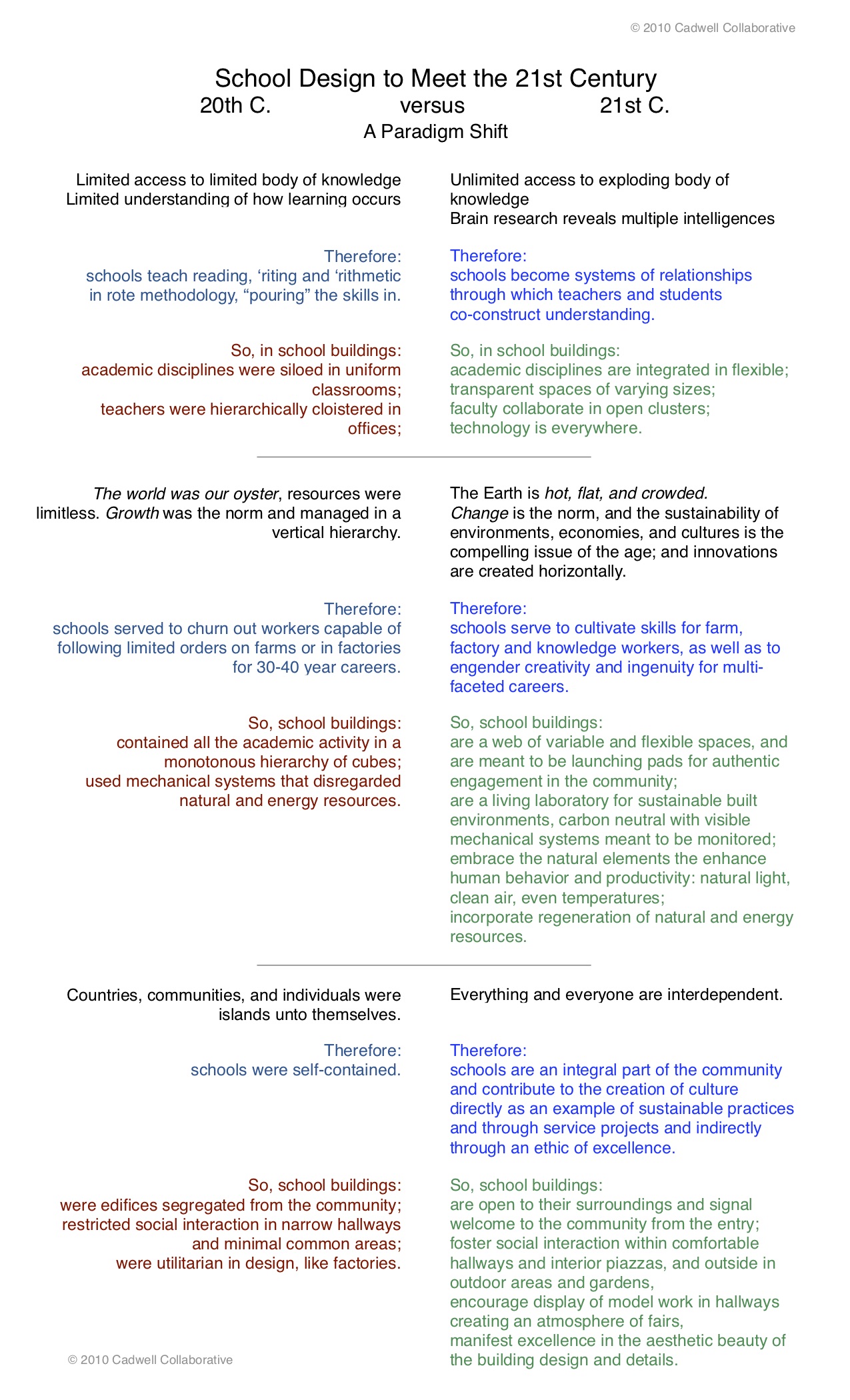HOK rendering…schematic design phase for Butler University School of Education
There are many ways to think about Education in the 21st Century and here is one way I have composed my understanding. My construct begins with the paradigm shift caused by many factors, including: brain research, sustainability, and, well…living in a whole new world. With this paradigm shift we have come to understand more about how we learn (through multiple learning styles, multiple intelligences, the 100 Languages). We have begun to frame our thinking about sustainability. And we are learning to embrace the ways that we create meaning in our lives. Each of these areas can be restated as Skills for the 21st Century…and the skills, new and evolving, require a new and evolving 21st C Education Curricula: cross-disciplinary research projects, service projects, and an “ethic of excellence.” New curricula requires a new way of thinking about 21st C School Design, new patterns for design, including: labs and studios, transparency, gradation of spaces, sustainable materials and energy systems, connection to community, galleries and fairs, aesthetics.
I have composed a keynote presentation of this thinking…one that I have used to stimulate thinking in many contexts including faculty curricula design meetings and with school architects. Here is the outline slide of the presentation…followed by a collage slide of some of the many images that I use in the discussion…and then, a partial bibliography of sources that have inspired this composition.
I’d be happy to share this with anyone over ZOOM…Cadwell Collaborative’s new found internet friend (we can host groups of up to 100!!!!). Just drop me an email at j.ashley.cadwell@gmail.com.
Here is another outline of the thinking.











